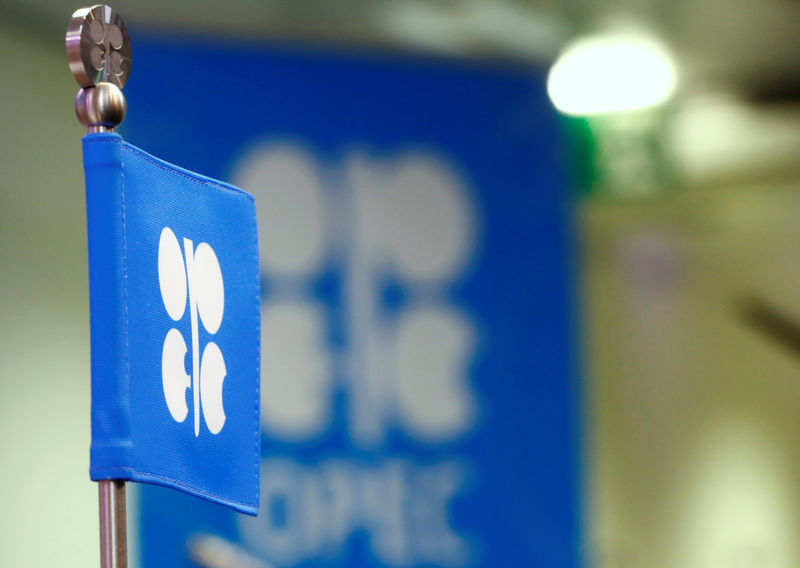By Barani Krishnan
Investing.com -- Crude prices jumped more than 4% Monday on bets that producer group OPEC+ will announce a substantial output cut over the next 48 hours to stop a four-month market slide that has shaken the nerves of some bulls in the trade.
Be that as it may, noisy talk about using aggressive rate hikes to suppress inflation could also disrupt the best-laid plans of longs in the market, leading to undue volatility in the days and weeks ahead.
New York-traded West Texas Intermediate settled at $83.63 per barrel, up $4.14, or 5.2%, on the day. WTI ended September down 12.5 % and the third quarter lower by 24%.
Brent, the London-traded global benchmark for oil, settled at $88.86, up $3.72, or 4.4%. Brent finished September down 11% and the third quarter lower by 22%.
“Energy traders are pumping up crude prices ahead of the OPEC+ meeting as expectations are high that they will deliver the biggest reduction in output since the beginning of the pandemic,” said Ed Moya, analyst at online trading platform OANDA. “This will be the first in-person meeting since 2020, which means they will probably go big here and deliver a cut of more than 1 million bpd.“
The reduction will come after just after a 100,000-bpd cut by OPEC+ last month that was largely viewed as nominal.
It will also be only a few months since the alliance — which groups the 13-member Saudi-led Organization of the Petroleum Exporting Countries with 10 oil exporters steered by Russia — brought crude production back to pre-COVID 19 levels, following two years of extreme market headwinds from the pandemic.
Oil bulls have tuned out all market negatives to bet instead on demand in the fourth quarter amid projections that top crude buyer China will do fewer — or no — COVID lockdowns from here, and that the Biden administration will stop draining the U.S. Strategic Petroleum Reserve by November in its bid to keep gasoline prices suppressed.
Bloomberg energy markets commentator Julian Lee, however, noted that OPEC+ hasn’t met its production target for months now, thus whatever it announces Wednesday would have to be verified by the market later.
“But even a big reduction to targets may have little impact on actual supplies, unless they can agree to redistribute production targets, or the Saudis step in to act alone,” Lee said in his latest column, adding that “giving up market share, even if it’s only theoretical market share, is never popular.”
Russia is pushing OPEC+ to cut output by a substantial 1.0 million barrels per day or around that, those familiar with the Kremlin’s thinking have said. But Moscow is unlikely to contribute much to any production cut by the alliance due to the ongoing impact on its energy exports from Western sanctions imposed over its invasion of Ukraine.
The Russians have also been undercutting others in OPEC+ by selling their crude at heavily discounted rates to buyers like China and India. A production cut by OPEC+ that Moscow does not fully participate in will benefit Russia more than the rest of the alliance as it might continue to steal customers from the others.
Then, there’s the issue of more jumbo-sized rate hikes by the Fed to bring inflation under control and what those could do to the economy.
Investors are assessing the likelihood of another 75 basis-point rate hike at the Fed’s November meeting. The Fed’s policy rate is now in the 3.00%-3.25% range, a full 3 percentage points higher than where it was at the start of 2022, and officials have penciled in another increase in December after the forthcoming one in November.
Hawkish Fed talk typically pushes up the dollar, weighing on commodities, including crude, that are priced in the currency.
The Dollar Index, which pits the greenback against the euro, yen, pound, Canadian dollar, Swedish krona and Swiss franc, was down on Monday but could reprise recent 20-year highs if the Fed keeps up to rate-hike agenda.
A slew of Fed policymakers are to speak this week to push the central bank’s cause. They include New York Fed President John Williams, Atlanta Fed President Raphael Bostic, Chicago Fed President Charles Evans, San Francisco Fed President Mary Daly, and Cleveland Fed President Loretta Mester.
